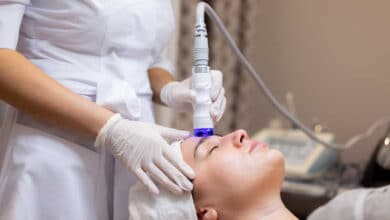What Every Person Needs to Know About Liposuction

Individuals often diet and exercise only to find they have stubborn areas of fat they cannot get rid of. They look for other options to address these areas, and many people choose to undergo liposuction. This procedure sculpts areas by removing localized pockets of fat. Professionals report the most common areas treated with liposuction include the abdomen, upper arms, thighs, hips, and neck. In fact, many people use liposuction along with other procedures to achieve the desired results.
When a doctor performs Liposuction Near Me, they take a thin tube, known as a cannula, and insert it into the treatment area with the help of small incisions through the skin. This cannula loosens excess fat and removes it from the body with the help of a syringe vacuum attached to the cannula. This technique allows fewer incisions to be made in the body, and the results are smoother and more natural than seen with other treatment options. However, new liposuction procedures are offered today, and the doctor will help the patient determine which is right for them.

Who is a Good Candidate for Liposuction?
Men and women need to know whether they are good candidates for liposuction before going forward with this procedure. The procedure is not for those who want to lose weight and have more than 20 extra pounds. Anyone looking to lose a large amount of weight and those who may gain weight in the future, such as women who plan to bear more children, should consider other options.
A person who has a minimal amount of excess skin will often find liposuction is right for their needs. They need good muscle tone and skin elasticity to proceed with the procedure, and the excess fat should be isolated in certain areas of the body. If a person’s weight fluctuates, liposuction won’t be as effective. Finally, the person needs to be in good health. Before having this or any procedure, the person must understand the anticipated results. If they have unrealistic expectations before undergoing liposuction, they won’t like the results.
What Liposuction is Not Appropriate For?
Patients who have loose, saggy skin will find liposuction does not address this problem. They may need a tummy tuck or body lift to remove the excess skin. In addition, individuals who wish to lose a large amount of weight will find liposuction isn’t of benefit to them. They should consider other procedures and use liposuction to address any areas they aren’t happy with after they reach their target weight.
Talking with a Liposuction Provider
The candidate for liposuction needs to meet with the provider to learn if they should undergo this procedure or consider other options. During this meeting, the patient and provider discuss the surgical goals along with the various treatment options. The provider needs to take pictures of the areas to be treated and share potential outcomes with the patient. In addition, the patient must know potential risks to make an informed decision about whether they want to go forward.
During this discussion, the patient needs to share their current and ideal weights. As skin elasticity plays a role in the success of liposuction, the doctor will take measurements to determine the laxity of the skin. The provider needs a complete medical history to decide whether the patient can have liposuction safely, including information about any allergies the person has and any medications they are taking.
This meeting also needs to cover other topics. This includes anesthesia options, where the procedure will take place, and what payment options are offered. When the provider and patient agree liposuction will be of benefit in achieving the patient’s goals, a surgical plan is created.
Liposuction Options
The surgeon determines which procedure will provide the desired results. Tumescent liposuction involves the use of an anesthetic tumescent solution. The surgeon injects this solution into the area being treated to keep bleeding and discomfort to a minimum. Doctors often do this procedure with nothing more than local anesthesia.
Certain patients benefit from ultrasound-assisted liposuction. Ultrasound energy breaks up the fat and detaches it. This allows more fat to be removed with less effort, and the procedure takes less time. Laser-assisted liposuction uses laser energy rather than ultrasound technology when removing the fat.
Suction-assisted liposuction uses a vacuum attached to the cannula to remove unwanted fat. Power-assisted liposuction also uses a cannula and vacuum to extract the fat. The power feature enhances the cannula’s motion.
The Cost of Liposuction
The cost of liposuction varies based on several factors. For this reason, the surgeon cannot provide a quote until after the initial meeting. Factors that influence the cost include the area to be treated, anesthesia requirements, the doctor’s fees, the fee for the surgery center, and any medical tests needed. Prescriptions and post-surgical garments also affect the cost. Learn about any financing options before scheduling the procedure.
Preparing for the Treatment
Patients must know what they need to do prior to surgery. For example, a person who smokes must stop prior to the procedure. Anyone taking anti-inflammatory medications or supplements must quit using them, as they increase the chances of bleeding. Exercise and a healthy diet are needed prior to liposuction, and the patient must meet any weight benchmarks set by the doctor. Finally, don’t shave the treatment area. Ingrown hairs increase the risk of an infection developing following the procedure.
Pack a bag with garments to wear after the procedure. They need to be loose-fitting so they won’t rub against the treated area. In addition, patients must have someone at the surgery center to drive them home following the procedure.
Recovering After Liposuction
Patients find they don’t recover overnight following liposuction. The process is gradual, although most people return to work after 14 days. They cannot resume normal activities, however, until four to six weeks following the procedure. The doctor will determine when it is safe to do so.
Immediately following the procedure, the doctor wraps the treated area with a compression garment or bandage. This helps keep swelling to a minimum while compressing the skin to the desired contours.
Swelling and bruising are common in the 48 hours following the procedure. The bruising lasts up to ten days, while the swelling can take six weeks to disappear. However, some patients experience residual swelling for months after liposuction.
In the first three days following liposuction, the area that was treated should remain elevated. Allow it to rest and heal. Avoid alcohol for the first seven days following the procedure, and don’t smoke for at least a month. Smoking can lead to coughing, bleeding, and fibrosis. Doctors tell patients to avoid anti-inflammatory medications along with lifting, straining, and bending for the first few weeks.
The patient cannot engage in strenuous exercise for four to six weeks following the procedure. In addition, sun and heat need to be avoided during this period, as they can lead to further swelling of the treated area. The compression garment should be worn during this time period to help keep swelling to a minimum.
Additional Uses for Liposuction
People often associate liposuction with body contouring when diet and exercise don’t produce the desired results. However, there are medical conditions that benefit from liposuction. For instance, a doctor may recommend a patient suffering from lymphedema undergo liposuction. The procedure helps to remove excess fluid collecting in the tissues of the arms and legs. This fluid, known as lymph, brings about swelling, pain, and discomfort. Liposuction helps to reduce these symptoms.
When a person loses over 40 percent of their body mass index, they find additional concerns arise. For example, they may struggle with excess skin. The doctor might recommend liposuction for these individuals once they reach the target weight.
Some men develop breasts because of a condition known as gynecomastia. Fat develops in this area of the body, and the male breasts become enlarged. Liposuction helps to remove this fat and restore the male’s normal appearance. This procedure may also address benign, fatty tumors known as lipomas.
Lipodystrophy syndrome is a condition in which fat loss occurs in one part of the body while fat accumulates in another area. This uneven distribution of fat affects the person’s overall appearance. Liposuction helps to redistribute the fat.
What to Expect
A person doesn’t see the full results of liposuction for up to six months following the procedure. However, as the surgeon removes fat cells from the body, the results are permanent. Any weight gain, including that associated with pregnancy, can lead to fat returning. Furthermore, patients who continue their unhealthy eating habits will find the fat returns.
Any person who undergoes liposuction will need to maintain a healthy weight and follow a well-balanced diet. Any weight that is gained may lead to the loss of the new contours. Consider this when determining if liposuction is right for you.
Liposuction is a safe procedure that benefits many individuals. However, a patient must have all the facts when deciding if this treatment is right for their needs. Many people find the procedure meets their needs, while others discover another option may be better for them. The surgeon will help you determine this after a consultation, so make an appointment today to meet with them.




